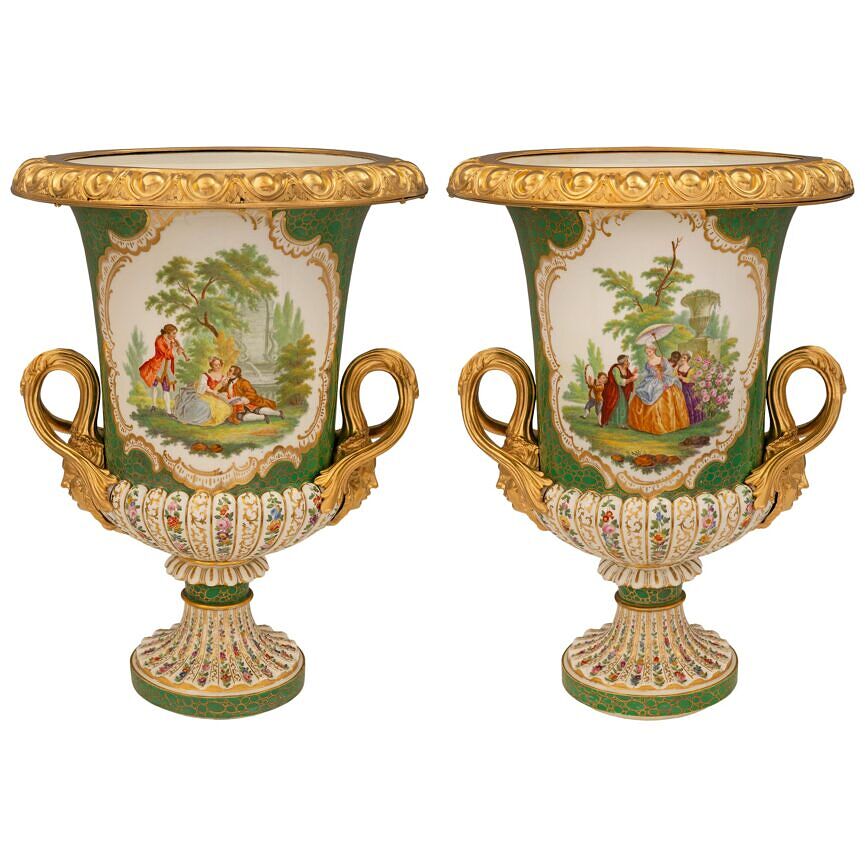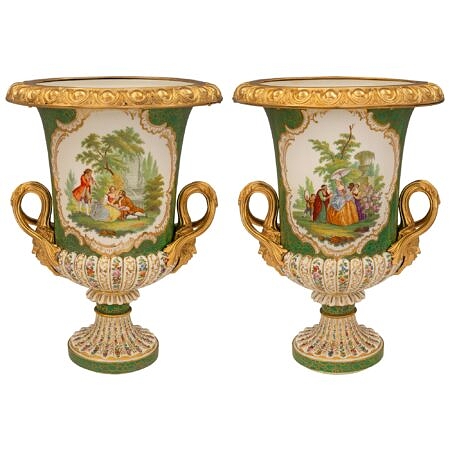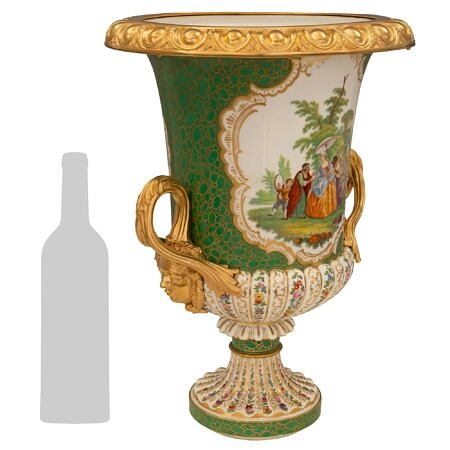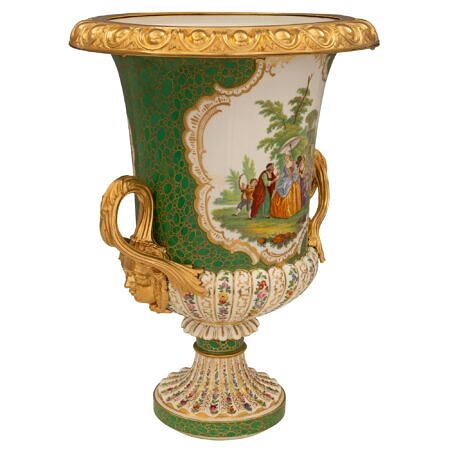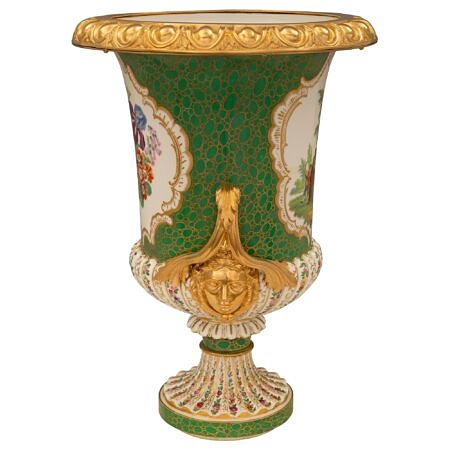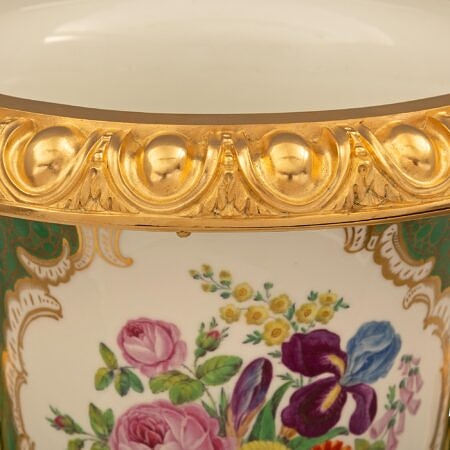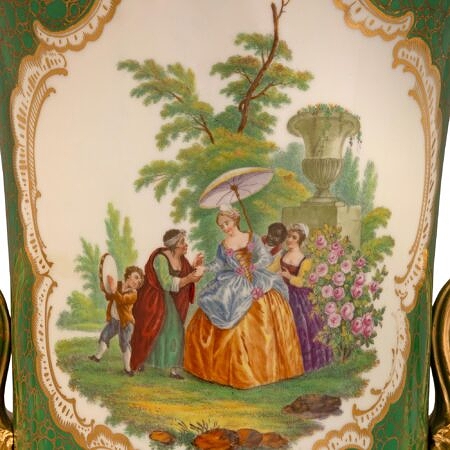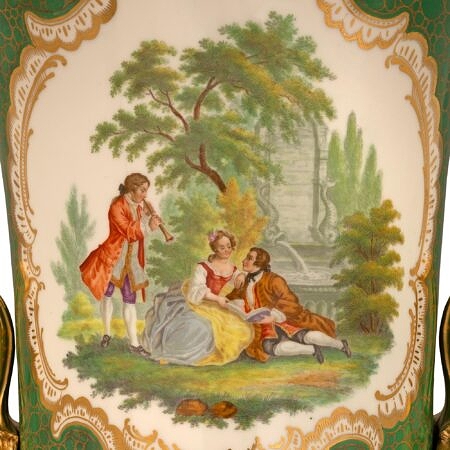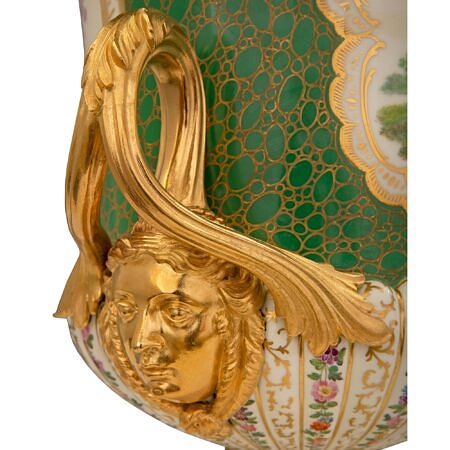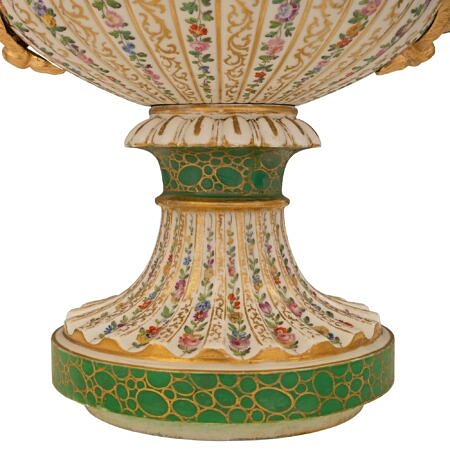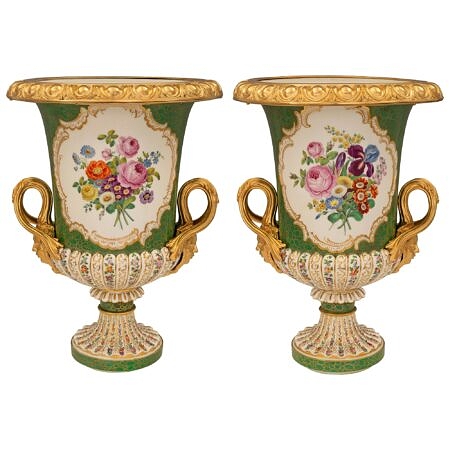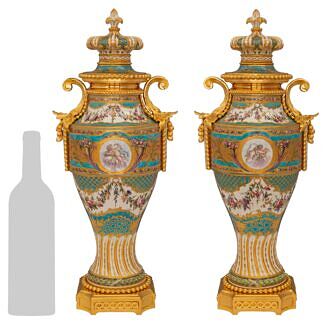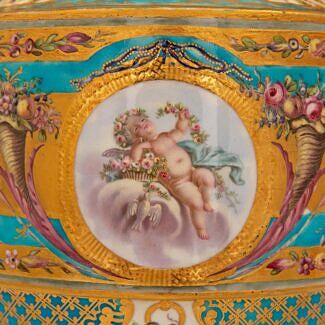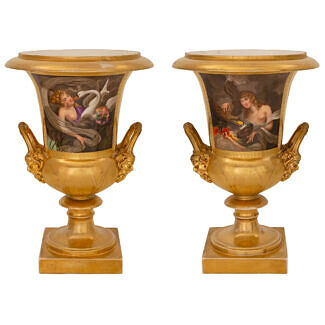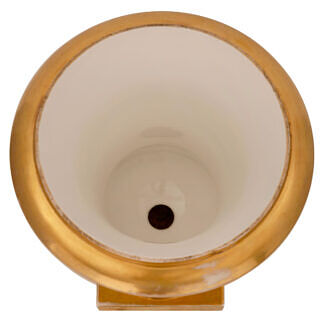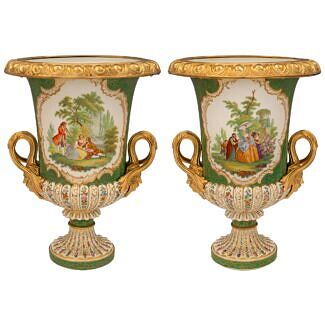A pair of French 19th century Louis XVI st. Sèvres porcelain urns
List: $18,800.00
A beautiful pair of French 19th century Louis XVI st. Sèvres porcelain urns. Each campagna shaped vase is raised by a circular base with a lovely gilt accent bubble like design below the elegant fluted socle shaped pedestal support with... — Read More
A beautiful pair of French 19th century Louis XVI st. Sèvres porcelain urns. Each campagna shaped vase is raised by a circular base with a lovely gilt accent bubble like design below the elegant fluted socle shaped pedestal support with wonderfully executed hand painted colorful blooming flowers. The body displays a fine reeded design with additional finely detailed floral and scrolled foliate patterns with striking richly chased scrolled ormolu handles with beautiful maidens. At the front of each vase are charming and finely detailed scenes, one of a gentleman and an elegant woman seated in a park reading a book with a gentleman playing the flute for them and the other scene of a beautiful maiden with her staff providing her shade with a young boy playing the tambourine. At the back of each vase are remarkable and vividly colored flowers all below a Les Oves and foliate designed wrap around ormolu band. — Read Less
- Item # 12786
-
H: 17.5 in L: 12.25 in D: 12.25 in
H: 44 cm L: 31 cm D: 31 cm
- France
- 19th Century
- Sèvres Porcelain
- Louis XVI st. Read More
- Sèvres Read More
It was founded through the support of King Louis XV of France and at the initiative of Madame Pompadour to be located near her Château.
Due to Sèvres’ reputation for excellence and prestige, it has always attracted some of the best artists throughout history; François Boucher, Albert-Ernest Carrier-Belleuse, Étienne Maurice Falconet, Alexandre Fragonard and August Rodin, just to name a few. Many of these artworks can be seen at the Louvre Museum and the Musée National de Céramique in France.
Initially, Sèvres created a soft paste porcelain know as Biscuit de Sèvres. In 1768 the Bordeaux chemist Villaris and Jean Baptiste Darnet discovered deposits of Kaolin on French soil. In 1771 the Royal Academy sent a report on the creation of hard paste porcelain at which time Sèvres began manufacturing hard paste porcelain.
Louis-Simon Boizot (1743–1809) was a French sculptor renowned for creating Biscuit de Sèvres models, and was the director at Sèvres from 1774-1800, followed by Alexandre Brogniart(1800-1847) and Henri Victor Regnault in 1854.
Related products
-
# 12658 - H: 22" L: 9" D: 7"
-
# 11613 - H: 14" L: 9" D: 9"


